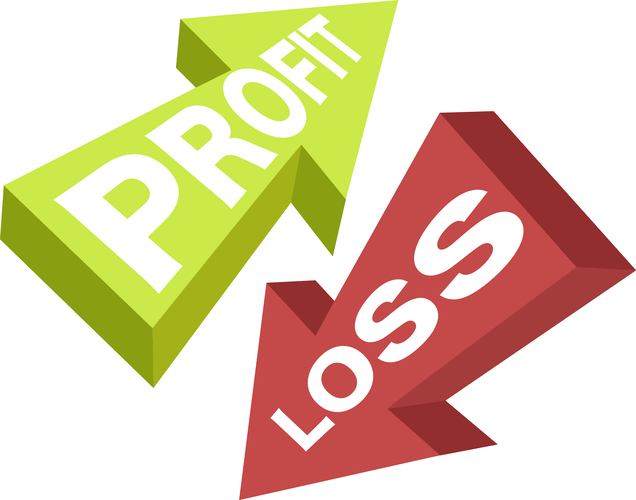
Net income is derived by subtracting all expenses (COGS and operating expenses) from total sales revenue. The difference in the methods is that management will prefer one method over the other for internal decision-making absorption costing purposes. The other main difference is that only the absorption method is in accordance with GAAP. Over the year, the company sold 50,000 units and produced 60,000 units, with a unit selling price of $100 per unit.
Absorption Costing vs. Variable Costing

Fixed manufacturing overhead is still expensed on the income statement, but it is treated as a period cost charged against revenue for each period. It does not include a portion of fixed overhead costs that remains in inventory and is not expensed, as in absorption costing. Absorption costing, alsocalled full costing, is what you are used to under GenerallyAccepted Accounting Principles. Under absorption costing, companiestreat all manufacturing costs, including both fixed and variablemanufacturing costs, as product costs. Remember, total variablecosts change proportionately with changes in total activity, whilefixed costs do not change as activity levels change. These variablemanufacturing costs are usually made up of direct materials,variable manufacturing overhead, and direct labor.
- However, absorption costing depends heavily on cost estimates and output assumptions.
- Carrying over inventories and overhead costs is reflected in the ending inventory balances at the end of the production period, which become the beginning inventory balances at the start of the next period.
- Operating expenses are represented on the income statement in the same way under absorption and variable costing.
- An ethical and evenhanded approach to providing clear and informative financial information regarding costing is the goal of the ethical accountant.
- If the company estimated 12,000 units, the fixed overhead cost per unit would decrease to $1 per unit.
- Absorption costing, also called full costing, is what you are used to under Generally Accepted Accounting Principles.
Absorption Costing Profit Formula: Understanding COGS
Figure 6.11 shows the cost to produce the 10,000 units using absorption and variable costing. Using the absorption costing method on the income statement does not easily provide data for cost-volume-profit (CVP) computations. In the previous example, the fixed overhead cost per unit is $1.20 based on an activity of 10,000 units. If the company estimated 12,000 units, the fixed overhead cost per unit would decrease to $1 per unit. Carrying over inventories and overhead costs is reflected in the ending inventory balances at the end of the production period, which become the beginning inventory balances at the start of the next period.
What is absorption costing under GAAP?
Companies using absorption costing must understand these inventory valuation implications for accurate financial statement analysis when production volumes change. Recall that selling and administrative costs (fixed and variable) are considered period costs and are expensed in the period occurred. Operating expenses are represented on the income statement in the same way under absorption and variable costing. Both fixed and variable operating expenses incurred during the period are recorded.
Calculating Ending Inventory Using Absorption Costing
Absorption costing is a method of costing that includes all manufacturing costs, both fixed and variable, in the cost of a product. Absorption costing is used to determine the cost of goods sold and ending inventory balances on the income statement and balance sheet, respectively. It is also used to calculate the profit margin on each unit of product and to determine https://www.bookstime.com/articles/online-store-inventory-management-guide the selling price of the product. The absorption cost per unit is $7 ($5 labor and materials + $2 fixed overhead costs). As 8,000 widgets were sold, the total cost of goods sold is $56,000 ($7 total cost per unit × 8,000 widgets sold). The ending inventory will include $14,000 worth of widgets ($7 total cost per unit × 2,000 widgets still in ending inventory).
Preparing an Absorption Costing Income Statement

We will use the UNITS SOLDon the income statement (and not units produced) to determinesales, cost of goods sold and any other variable period costs. The variable cost per unit is $22 (the total of direct material, direct labor, and variable overhead). The absorption cost per unit is the variable cost ($22) plus the per-unit cost of $7 ($49,000/7,000 units) for the fixed overhead, for a total of $29. Because absorption costing defers costs, the ending inventory figure differs from that calculated using the variable costing method.
- It includes direct costs such as direct materials or direct labor and indirect costs such as plant manager’s salary or property taxes.
- Over the year, the company sold 50,000 units and produced 60,000 units, with a unit selling price of $100 per unit.
- Under absorption costing, companies treat all manufacturing costs, including both fixed and variable manufacturing costs, as product costs.
- Compared to variable costing, absorption costing income statements tend to show less volatility in operating income from period to period.
- Absorption costing provides a more accurate, GAAP-compliant method of accounting for all production costs.
- The costing system should provide the organization’s management with factual and true financial information regarding the organization’s operations and the performance of the organization.
Despite differing income statement impacts, absorption costing adheres to GAAP while variable costing does not. Absorption costing is also often used for internal decision-making purposes, such as determining the selling price of a product or deciding whether to continue producing a particular product. Absorption costing is typically used in situations where a company wants to understand the full cost of producing a product or providing a service. This includes cases where a company is required to report its financial results to external stakeholders, such as shareholders or regulatory agencies. In contrast to the variable costing method, every expense is allocated to manufactured products, whether or not they are sold by the end of the period. In periods where production declines, the opposite effect happens – fixed costs are released from inventory, increasing cost of goods sold and lowering net income.
Quantum Costing: The Better Alternative to ABC (and the Cost Model You Always Wanted) – Modern Distribution Management
Quantum Costing: The Better Alternative to ABC (and the Cost Model You Always Wanted).
Posted: Sun, 16 Apr 2023 19:29:14 GMT [source]
